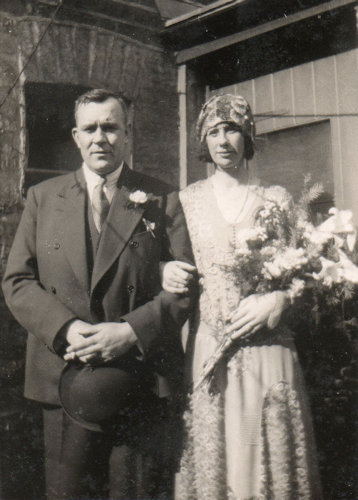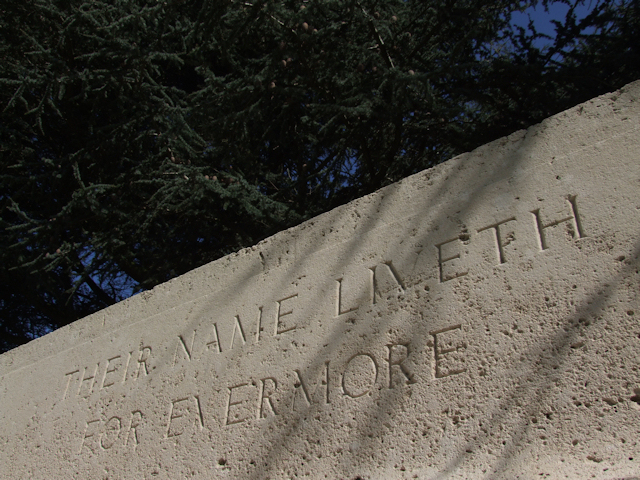Name
Sidney Smith
Conflict
First World War
Date of Death / Age
Rank, Service Number & Service Details
Hertfordshire Regiment
1st Bn.
'G' Coy.
Awards: Service Medals/Honour Awards
Cemetery/Memorial: Name/Reference/Country
Headstone Inscription
Not Researched
UK & Other Memorials
Pirton School Memorial
Biography
Sidney appears on the School War Memorial, confirming that he attended the school. Parish and census records revealed several possible men who could be the man who served. However Linda Smith, who is the daughter-in-law of the man who served, was able to confirm that he was the son of Clara Smith, the grandson of Edwin and Emma Louise Smith (née Furr) and that he was born on January 20th 1892. His father is unknown. Clara had been working at Knebworth Lodge Farm, Knebworth, and the family believes that the father may have been the master of the house. She was certainly absent from the Pirton 1891 census, when she would have been about seventeen.
Clara married William James Dawson in 1895 (James in later census). The 1901 census confirms that when they married, Clara already had two children: Sidney Smith and Bertram Charles Smith. Subsequently all their other children have Dawson as their surname. William is absent from the 1911 census, as he had died in 1909, but in 1901, when he was known as James, he was working as a navvy ground worker. Sidney’s brother, Bertram, later recorded as Charles, may also have served and survived - refer to Charles Smith for more family details.
Sidney is not present in the 1911 Pirton census, so was presumably working or living away from the village. He joined the Hertfordshire Territorials on February 10th 1914. Later the Parish Magazine of September 1915 confirms his enlistment in the 1st Hertfordshires, during 1914 and that he had volunteered for overseas service. His army medal roll index card gives that date as November 6th. Initially he was Private 2367 and then later Private 265409, probably when the Hertfordshires and Bedfords merged.
An undated newspaper cutting reports that Sidney was in “G” Company of the 1st Hertfordshire Regiment. The same report reveals glimpses of his life in the trenches, by quoting from a letter he wrote on the January 14th, (must be 1915 or later). He had to stand for twelve hours at a time in muddy conditions, but he makes light of that, describing how they have good fires afterwards to dry their clothing. It also records that ‘When we were in the trenches we started singing, and the Germans (only 200 yards away) heard us, they had the cheek to get on the top of their trenches and waved their hats to us, but we soon made them get lower by putting a few bullets into them.’ He expected to go back to the trenches soon, and adds that ‘The Herts. have been lucky up to the present, and hope to be lucky enough to get home safe. We are still merry, and we all keep in good heart.’
In a separate, and also undated newspaper cutting, he optimistically, writes ‘We live in hopes of being home in England soon after Christmas, as we all think that the war will be over very soon.’ He adds ‘But there is one thing I should like, and that is just one shot at the Kaiser.’
He wrote to his mother on May 21st 1915 that he had a wound to the top of his head caused by shrapnel – the British Army did not issue helmets until late 1915. At least for Sidney it was not too serious, but he was admitted to hospital in France. A later report revealed that he had been with Arthur Walker and Sidney George Roberts, also of Pirton and the same Regiment. Sidney Roberts was also wounded Arthur escaped uninjured but was killed in a similar incident in 1916.
The Parish Magazine of June 1917 records Sidney as wounded again, this time in the leg. The injury was serious enough for him to be discharged on July 27th 1917. The family story is that, upon his return to Pirton, the Lord of the Manor paid for an operation that enabled him to walk again, albeit with a stick. His discharge is confirmed by the War Badge records - those who were discharged as a result of sickness or wounds received a silver badge, which served to prove to others that he had ‘done his bit’.
After the war Sidney left Pirton and went to live in north London. He worked as a customs officer for Gilbeys and married twice, first to Elizabeth Barber, who died, and then to Winifred Waters in April 1931. He died in November 1956.
Additional Information
Text from the book ‘The Pride of Pirton’ by Jonty Wild, Tony French & Chris Ryan used with author's permission
Acknowledgments
Text from the book ‘The Pride of Pirton’ by Jonty Wild, Tony French & Chris Ryan used with author's permission



